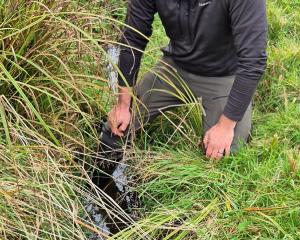Ravensdown and Solid Energy announced last week they were investigating the building of the multi-billion dollar plant in Eastern Southland.
The project was forecast to create up to 500 jobs.
Mr Gamble said 200 to 250 workers - mainly heavy machinery operators - would be needed for the construction of an open-cast mine.
Once the plant was running, a further 200 to 250 staff would be required, including electricians and other tradespeople and specialist chemical and process engineers, he said.
When asked where the workers were likely to come from, given Southland's low unemployment rate, Mr Gamble said the company had not considered that aspect of the project yet.
The proposed plant was forecast to produce up to 1.2 million tonnes of urea a year, from up to 2 million tonnes of lignite.
The materials used in the manufacture of the urea would undergo a two-stage process, Mr Gamble said.
The coal would be heated with oxygen under pressure until it turned into a gas known as syngas (or synthesis gas).
Syngas is composed of hydrogen and carbon monoxide, with a smaller amount of carbon dioxide.
This process broke down the molecular structure, Mr Gamble said.
The syngas was then further processed to make the fertiliser, he said.
A by-product of the process was granulated sulphur, which would be used in other fertiliser products, he said.
The amount of sulphur produced would only be about 10,000 tonnes a year, he said.
The technology had been "around for years", Mr Gamble said.
There were about 30 coal-to-fertiliser plants in China, he said.













